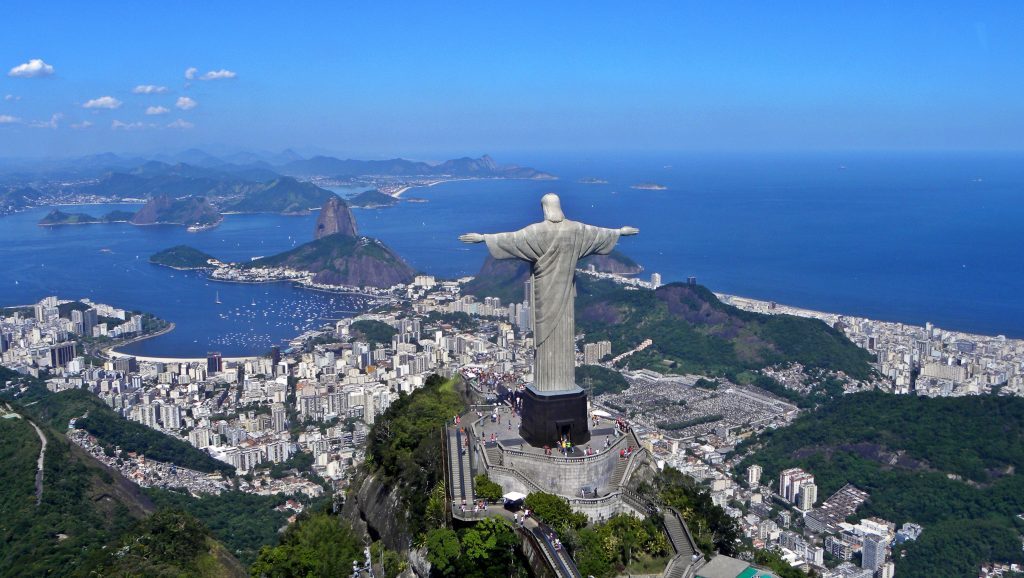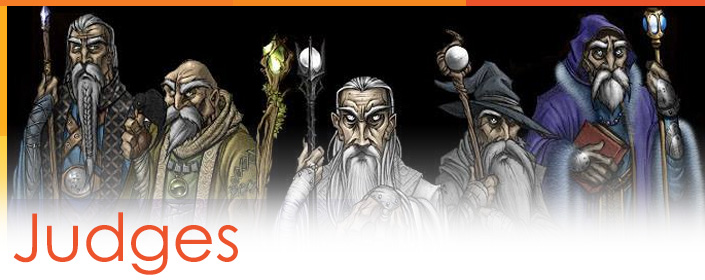How to Start a Team Limited GP
Grand Prix Rio de… Sao Paulo 2016
Brazil is the fifth largest country of the world, by dimension and by population, and has just hosted the 2016 Summer Olympic Games.
Its wonderful nature is represented by the Iguazu falls, at the border with Argentina, and the amazing landscape of Rio de Janeiro.

The place I recommend the most is the Christ Redeemer; it’s one of the seven wonders of the world, and the view on the bay of Rio de Janeiro is one of the most beautiful and exciting landscapes I’ve ever seen.

Here you have a short video to have a glimpse of the city:
Yes, the Grand Prix took place in São Paulo, the most populated city of the entire southern hemisphere (12 million in the city, 21 million in the metropolitan area), but I spent a few days in Rio after the GP… and, although I have friends in Sao Paulo, Rio is really much more beautiful!
Pleased to Meet You
A new continent, a new adventure, a new face.
As this was my first time traveling to the Latin American continent, we took the opportunity to create some advertising and some marketing for the event and for myself, with an interview that got posted on one of the local websites. Here you have the English version:
Name
Riccardo Tessitori

Age
42

Country
Italy

Favorite Card
Choose one card, only one card… ouch, this is so difficult.
We evolve in life, and the single card that may represent us evolves too.
What can I choose?
Should I choose the first card that made me feel “WOW, this is great”, when I started playing? It would be Lightning Angel.
Should I choose one of the representative cards of the deck I got most results with? It would be Mirari.
Should I choose a card that represents my role as a judge? Here I think Balance is the most iconic card.
Should I choose the card of a character that I recently loved a lot? It would be Sorin (surprised? ^__^)
Should I choose a card that is able represent my character? Impossible, I’m unique!
OK, let’s choose one…
LIGHTNING ANGEL
Fast (haste), swift (flying) and at the same time careful (vigilance) in his actions!

Favorite Color
RED, without any doubt.
In Magic literature, each of the five colors has some characteristics, and I would like to suggest a few enjoyable reads, where Mark Rosewater invites the colors of the Tarkir clans and interviews them. They are funny and interesting at the same time.
RED is the color of passion, the color of love, the color of emotions. What would life be without emotions?

Being a judge it’s like…
Being a judge is like being a Planeswalker, able to teleport to many different planes, able to live in different places, able to deal with different cultures, able to be a symbol for others.
For me, judging has become an extraordinary life experience, which allowed me to travel to many continents and discover many cultures and allowed me to grow as a professional and as a person, offering me a life full of adventures and discoveries.

What a judge must always have in his pocket
HONOR
A person who always wants to be an honorable person will do his best to be proud of all his actions, will always be respectful of others, and will do everything he believes is right.
Did you expect me to mention a simple object, right?
When you meet a person, it doesn’t matter if he’s black or white, it doesn’t matter if he’s rich or poor, it doesn’t matter if he’s naked or elegantly dressed… what matters is what that person has in their heart.
I would like to offer you another interesting read; this one is *very* deep, and each line may give you something special; read it, print it, then reread it many times in the future; in the different moments of your life, it will always make you feel something new:

Number of countries that you visited (as a judge)
25, on three continents (before coming to Brazil!)
Wow, that seems incredible!
What once was a simple hobby made me, in the last fifteen years, travel so much!
I want to tell you a “secret”: the most wonderful travel that judging allowed me to do is not to a physical place… it’s to an immaterial place, a state of mind.
It’s a travel to *myself*.
Open your mind to different people, to different ways of living, to different religions, to different emotions; once you will find that switch in your mind, your life will change and you will start living many new adventures, every day.
Trust me, life is wonderful.


Tournament Operations: Logistics Team – TEAM Sealed Deck
Some time ago, we learned how to efficiently start a Limited tournament.
Today, we are going to see only the differences between a TEAM Limited tournament and an individual Limited tournament; if you haven’t read the other article, I recommend you take a look, as it’s the basis for today’s article.
Seatings
Let’s start from the moment when we enter the tournament hall: we need to find our table.
As always, there will be pairing boards, and there will be letter ranges on top of them:



On top of the board, visible even when there are people around it, there should be the letter range.
A small detail: the big number can be used by judges to uniquely identify a pairing board, in case multiple copies of pairings are posted.
Now, how will I find my name and my table? We are a team of three.
Those of you who have been playing or judging for a long time may know that, many years ago, each team had a name… yes, any name! “The good, the bad and the ugly”, “Luke, Leia and Han”, “The presidents”, any name.
Today, we have no special name; the name of the team is simply the three names of the three competitors (then, if you are famous and you write articles, you can of course give your team a name!).
The software used to run tournaments lists the three names in the order A-B-C (at the moment of registration, each team must indicate the order).
The normal way to post seatings and pairings would be to have all members of all teams listed, but actually only one member of each team needs to find the table number, right?
A common way to post seatings and pairings is therefore by team, which has the advantage of needing to print a third of the pages (it’s faster, and everybody goes to dinner 15 minutes earlier just because of this!); in the alphabetical order, only the name of PlayerA will be used.
A recommendation to judges is to keep a copy of the full seatings available at the main stage, to assist whoever may have difficulties in finding their PlayerA in the seatings (see article dedicated to the “Stage Team”).

Table Numbers
The table numbers may be prepared by player (match 1 is at tables 1-2-3; match 2 is at tables 4-5-6…) or by team (match 1 is at table 1; match 2 is at table 2…); the common way to do it is to have only one table number per match (an entire team will be seated at three tables with the same number).
Some organizers use a single table number for the entire match (and the two teams need to make sure that PlayerA is playing against PlayerA, etc), and some organizers number all individual tables, indicating the letter too (47A, 47B, 47C, 48A, 48B, 48C, 49A…).
This is an example of what a table number may look like:

Another tool that I’ve recently seen was to give bracelets of three different colors, with the name of a Magic Character:
A: Avacyn, white bracelet
B: Blue bracelet, Jace
C: Chandra, red bracelet
Pool Registration
OK, we got to our table, and the tournament is about to begin.
If we are in day 2 of a Grand Prix, we receive a stamped card pool:

These pools are prepared by Wizards and are wrapped, with a number on them.
If we are in day 1 of a Grand Prix, we receive 12 boosters, which need to be registered by the team in front of us (you can find more information about the current pool registration system here).
To make the process faster (have I already told you that small details may allow us to go to dinner earlier? ^__^), here you have a few recommendations for the process of opening the boosters:
- Distribute 4 boosters per player, so that the three members of the team will open the boosters at the same time
- Ask the players to just open the boosters and put them on a single pile in front of them; there is *no need at all* to show all the cards, it’s only a waste of time (the person in front will receive and see all cards in just a minute); looking at the rares and quickly checking that rarities are correct can be done; laying all the cards on the table is really only a waste of time.
- Ask the players who open their boosters to NOT sort the cards in any way; it will be the team in front of them that does sort them by color
And a few recommendations for registering the pool:
- Have one person sort by color, a second one sort alphabetically and the third one register
- If there are two sets, have one person sort and register the set with only four boosters, the second person sort the set with eight boosters and the third person register the set with eight boosters
- When the person sorting has finished, he can give a significant help by reading the cards to the person registering (if you need to move your eyes from the decklist to the cards hundreds of time, it takes longer and is more tiring for your eyes)
- If there are two sets, consider the possibility of printing the Master Decklist on two different sheets, so that two people can register at the same time
- Distribute only the Master Decklist, which is the decklists where the pools are registered (the decklists where individual decks are recorded can be distributed later)
Deckbuilding
During boosters opening and pool registration, it’s better that a single team stays on one side of the table.
For deckbuilding, there are teams that prefer staying side to side, on the same side of the table, and teams that prefer to stay in a kind of circle, with two people on one side and the third person on the other side (in the software, you may have read the term “L-shape”:

Just before the beginning of the 60 minutes building time, the easiest way I found is to just announce “If you want one of your team members to move to the other side of the table, just ask the team in front of you if they want to do the same, and move freely”; it’s simple, quick and you can be sure that people will be able to move without any other instruction.
And a few recommendations for the deckbuilding period:
- Distribute three decklists per team (with A-B-C indicated) before they begin spreading out all the cards on the table to build
- If possible, use three different colors for A, B and C; it will make it faster to collect them in order (white, blue, NO black, red, green… white for the Master Decklist, Blue for Player A, Red for Player B, Green for Player C… or, if you are using the bracelets mentioned above, use white, blue, red for the three decks and any other color for the pool)
- Lands on each table and extra land stations, as usual
- Collect decklists in groups of four and put them immediately in order; staple them later (all judges collect, only a few judges in the backstage area staple)
- Most of the decklists will be completed in the last five minutes or in the five minutes after the deckbuilding time is finished; don’t use collection stations, just send all the judges on the floor to collect
- Team deckbuilding requires much more time (it lasts 60 minutes, compared to the 30 for individual tournaments) and more energy; post pairings for round 1 at least 10 minutes after the end of deckbuilding period (people need to finish listing, sleeve, go to the bathroom)
Decklists
All judges collect decklists between rows, and, once there are no more decklists on tables, we can consider the start of the day completed… and, when Round 1 will have started, your head judge will think “OK, 90% of the work is completed” (surprised to hear this? ^__^)
The rest of the process that involves decklists will be treated in the article dedicated to “Team Decklists”.
Here you have an example of the decklists area, with the seatings index by team above and the table number ranges below:


Great Judges of the World: Dustin De Leeuw
Dustin De Leeuw is a level 3 judge from the Netherlands, a country that has always been a great foundry of extremely skilled, wise and friendly judges (for some years, it was the only country with level 5 judges; though a small country, it had two level 5 and one level 4 judge, not bad at all!). Dustin is now a veteran at European GPs and has also started his intercontinental experience, bringing a new point of view and unstoppable energy and a smile everywhere in the world.

Goodbye Brazil
… and another awesome adventure has come to an end.
Goodbye Brazil, you have been fantastic; your warm people proved to be as welcoming and kind as everybody told me. It was an honor to meet you, and I’m sure we will meet again!

I hope you enjoyed this article, and I’m looking forward to reading your comments.
If you want to add a comment and discuss this article in the Judge forums, click HERE.
All comments, feedback and advice are very welcome 🙂

